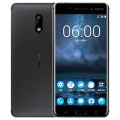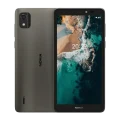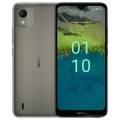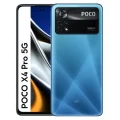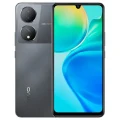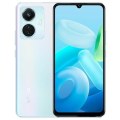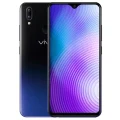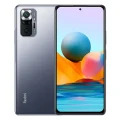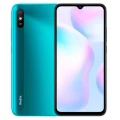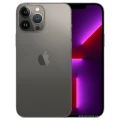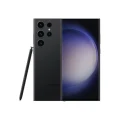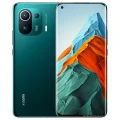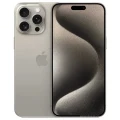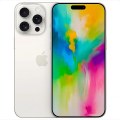- Awesome page
- Latest Mobile
- Smartphones
- Nokia 1.4
Nokia 1.4
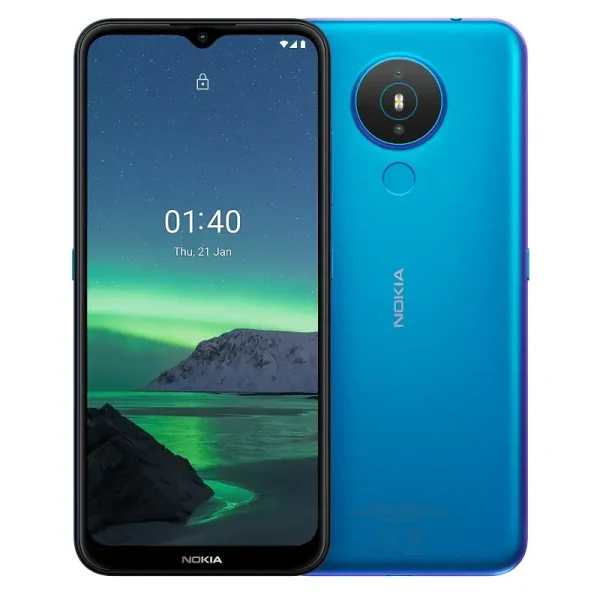


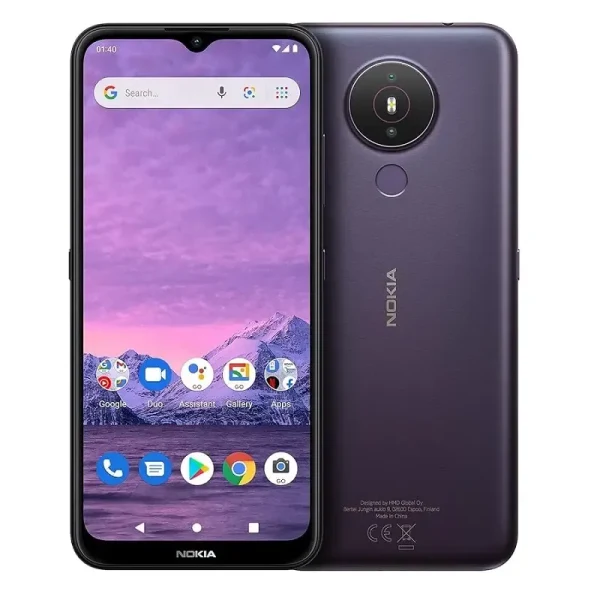
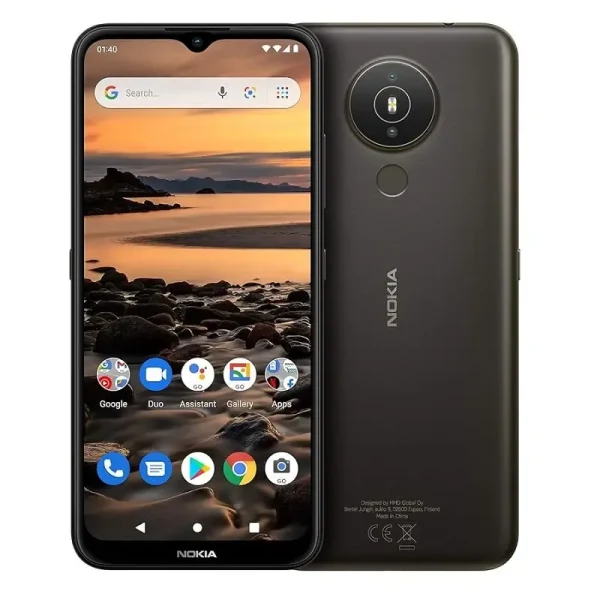
Nokia 1.4 Price in Bangladesh
The price of the Nokia 1.4 is BDT 9,000. This smartphone is available in multiple variants with 1/2/3 GB of RAM and 16/32/64 GB of internal storage. It features a 4000mAh battery, although it does not support fast charging. Running on Android 10, the Nokia 1.4 is powered by the Qualcomm QM215 Snapdragon 215 chipset, ensuring efficient performance for everyday tasks.
Specifications
General
| Model | Nokia 1.4 |
| Announced | 03-02-2021 |
| Released | 03-02-2021 |
| Status | Available |
| Unofficial price | Unofficial 3GB 64GB 9000 |
Design
| Dimensions | 166.4 x 76.7 x 8.7 mm (6.55 x 3.02 x 0.34 in) |
| Weight | 178 g (6.28 oz) |
| Colors |
178 g (6.28 oz) |
Network
| Technology | GSM / HSPA / LTE |
| 2G Network |
GSM 850 / 900 / 1800 / 1900 - SIM 1 & SIM 2 (dual-SIM model only) |
| 3G Network |
HSDPA 850 / 900 / 1700(AWS) / 1900 / 2100 - LATAM HSDPA 850 / 900 / 2100 - Global |
| 4G Network |
LTE band 1(2100), 2(1900), 3(1800), 4(1700/2100), 5(850), 7(2600), 8(900), 12(700), 17(700), 28(700), 66(1700/2100) - LATAM LTE band 1(2100), 3(1800), 5(850), 7(2600), 8(900), 20(800), 28(700) - Global |
| GPRS <strong>GPRS</strong> (General Packet Radio Service) is a packet oriented mobile data service on the 2G and 3G cellular communication system's global system for mobile communications (GSM), Generally, GPRS is used for the purpose of wireless data transfer, such as sharing pictures and videos or browsing the Internet via a mobile phone connection. | |
| EDGE <strong>EDGE</strong> (Enhanced Data GSM Environment) is a wireless network technology generally considered the next step in the 2G network offers data transfer rates up to four times faster than ordinary GSM networks, Generally, EDGE is used for the purpose of wireless data transfer, such as sharing pictures and videos or browsing the Internet via a mobile phone connection. | |
| Speed | HSPA 42.2/5.76 Mbps, LTE Cat4 150/50 Mbps |
Display
| Display Type <strong>Display Technology => </strong> A number of display technologies and types used in mobile phones => TFT (Thin Film Transistor), IPS (In-Place Switching), OLED (Organic Light Emitting Diode), AMOLED (Active-Matrix Organic Light-Emitting Diode), Super AMOLED (an even advanced version of AMOLED), Resistive Touchscreen (Resistive touchscreens contain two layer of conductive material with a very small gap between them which acts as a resistance), Capacitive Touchsceen (Capacitive touchscreen technology consists of a layer of glass coated with a transparent conductor) | IPS LCD capacitive touchscreen, 16M colors |
| Size | 6.52 inches, 102.6 cm2 (~80.4% screen-to-body ratio) |
| Resolution | 720 x 1600 pixels, 20:9 ratio (~269 ppi density) |
Camera
Main camera
| Camera Setup | Dual 8 MP, (wide), AF 2 MP, (macro) |
| Features |
LED flash, HDR |
| Video | 720p@30fps |
Selfie camera
| Camera Setup | 5 MP |
| Features |
LED flash |
| Video | 720p@30fps |
Hardware
| Chipset <strong>Chipset</strong> is a group of integrated circuits designed to perform one or a more dedicated functions, often with real time computing constraints, Popular smartphones are equipped with more advanced embedded chipsets that can do many different tasks depending on their programming. | Qualcomm QM215 Snapdragon 215 (28 nm) |
| CPU <strong>CPU</strong> (Central Processing Unit) mostly known as processors, CPU processes instructions in order to carry out certain functions that make your device operate properly. Processors are often described as the brain of computers, smartphones and tablets, Smartphones and tablets rely on processors to carry out their every task, Processors are an incredibly important factor in selecting any type of computing device, including your smartphone. | Quad-core 1.3 GHz Cortex-A53 |
| GPU <strong>GPU</strong> (Graphics Processing Unit) is a single-chip processor designed to rapidly manipulate and alter memory to accelerate the creation of images in a frame buffer intended for output to a display, This includes things such as lighting effects, object transformations, and 3D motion. | Adreno 308 |
| RAM (Memory) <strong>RAM</strong> (Random Access Memory) is a type of computer memory that can be accessed randomly, any byte of memory can be accessed without touching the preceding bytes that allows information to be stored and accessed quickly from random locations. RAM is the most common type of memory found in computer systems, smartphones, tablets and other electronic devices. | 1/2/3 GB |
| Internal Storage <strong>Internal Storage</strong> is a data storage space (flash memory) mostly used in smartphones, tablets and other electronic devices where operating system, apps, music, photos, videos, files and other user data Is stored. | 16/32/64 GB eMMC 5.1 |
| Sensors <strong>Sensors</strong> are electronic components that detects and responds to some type of input from the physical environment. The specific input could be light, heat, motion, moisture, pressure and location, The output is generally a signal that is converted to use in computing systems, a location sensor, such as a GPS receiver is able to detect current location of your electronic device. |
Fingerprint (rear-mounted), accelerometer, proximity |
Connectivity
| Bluetooth <strong>Bluetooth</strong> is a wireless communications technology for exchanging data between mobile phones, headsets, computers and other network devices over short distances without wires, Bluetooth technology was primarily designed to support simple wireless networking of personal consumer devices. | 4.2, A2DP, LE, aptX HD |
| Infrared <strong>Infrared</strong> connectivity is an old wireless technology used to connect two electronic devices. It uses a beam of infrared light to transmit information and so requires direct line of sight and operates only at close range. | |
| USB | microUSB 2.0, USB On-The-Go |
| GPS <strong>GPS</strong> The Global Positioning System is a satellite-based radio navigation system, GPS permits users to determine their position, velocity and the time 24 hours a day, in all weather, anywhere in the world, In order to locate your position, your device or GPS receiver must have a clear view of the sky. | Yes, with A-GPS, GLONASS, BDS |
| NFC <strong>NFC</strong> (Near field communication) is a set of standards for smartphones and similar devices to establish peer-to-peer radio communications with each other by touching them together or bringing them into proximity, usually no more than a few inches. |
Battery
| Battery Type <strong>Battery Type => </strong> Cell phones run on various kinds of batteries depending on the manufacturer, phone size or shape and features. There are basically four types of cell phone batteries => Lithium Polymer, Lithium Ion, Nickel Metal Hydride and Nickel Cadmium. | Non-Removable Li-Po |
| Capacity <strong>Battery Capacity</strong> is a measure (typically in Amp-hr) of the charge stored by the battery, and is determined by the mass of active material contained in the battery. The battery capacity represents the maximum amount of energy that can be extracted from the battery under certain conditions. | 4000 mAh |
Nokia 1.4 Review: A Budget Smartphone Worth Considering?
The budget smartphone market is brimming with options, making it a challenge for any device to truly stand out. Yet, Nokia, a name synonymous with reliability, has introduced the Nokia 1.4—a smartphone designed for those looking for essential features at an affordable price. Targeting budget-conscious shoppers and longtime Nokia fans, the Nokia 1.4 promises solid build quality, decent performance, and a user-friendly experience. But how does it actually fare in real-world use? Let’s find out.
___
Design and Build Quality
The design of the Nokia 1.4 is one of its strongest points in this price bracket. The phone features a polycarbonate back with a matte finish, ensuring durability while offering decent resistance to fingerprints. Available in Fjord, Charcoal, and Dusk colors, the gradient effect gives it a touch of sophistication not often seen in the budget segment.
Even with a robust design, the Nokia 1.4 remains lightweight and easy to handle, despite boasting a 6.52-inch display. Its rounded edges and curved back ensure a comfortable grip, which is essential for extended use. While the device doesn’t claim to be water-resistant, the materials used are sturdy enough to endure daily wear and tear.
Durability Assessment
Budget-conscious buyers often prioritize durability, and the Nokia 1.4 meets expectations here. The plastic build might not feel as premium as more expensive devices, but it contributes to its resilience against accidental bumps.
___
Display and Camera Performance
A highlight of the Nokia 1.4 is its 6.52-inch HD+ (720 x 1600) IPS LCD display. Despite the affordable price, the phone offers respectable brightness levels and decent color accuracy. Text and icons appear sharp, and viewing angles are satisfactory for everyday use, making it suitable for watching videos or browsing.
Camera Performance
The Nokia 1.4 features a dual-camera system on the rear, with an 8 MP primary lens and a 2 MP macro lens. The camera performs adequately in well-lit conditions, capturing decent details with natural color reproduction. However, low-light performance leaves much to be desired, as noise tends to creep into the images. For selfies, the 5 MP front-facing camera does a passable job but struggles under dim lighting.
While the Nokia 1.4 isn’t a photographer’s dream, budget consumers will appreciate its ability to handle basic photography needs. For casual snapshots and social media posts, it does the trick without complicating the process.
___
Battery Life and Performance
The Nokia 1.4 comes equipped with a 4000mAh battery—a key selling point for users focusing on all-day functionality. With moderate use, which includes browsing, messaging, and some video streaming, the phone comfortably lasts an entire day. However, with no fast-charging capabilities, fully recharging the device can take over three hours, which may be a downside for users on the go.
Performance
Powered by the Qualcomm QM215 Snapdragon 215 chipset, the Nokia 1.4 delivers performance that’s suitable for everyday tasks like texting, light social media usage, and web browsing. However, don’t expect it to handle resource-intensive games or heavy multitasking seamlessly. The 1/2/3 GB RAM options might feel insufficient for power users, especially in 2024, but for basic tasks, it keeps up well.
Simple games like “Subway Surfers” run smoothly, but advanced games like “Call of Duty Mobile” struggle significantly on the device.
___
Software and User Experience
Running on Android 10 (Go Edition), the Nokia 1.4 offers a clean, straightforward software experience that’s tailored for entry-level smartphones. Android Go is specifically designed to optimize performance on devices with limited hardware capabilities, and it shows here.
Apps launch quickly, and navigation remains relatively smooth, with minimal hiccups during routine use. The stock Android experience also means fewer pre-installed apps and bloatware, giving users more freedom to customize their device.
Unique Features
The Nokia 1.4 includes tailored features aimed at enhancing usability, such as Family Link, which is great for parents looking to set boundaries for their children’s use. Combined with frequent security updates, the software experience earns solid marks in this price range.
___
Value for Money
Starting at just BDT 9,000, the Nokia 1.4 positions itself as a budget-friendly option for first-time smartphone users or those seeking a reliable backup device. While it doesn’t offer the high-end specs of flagship models, it stands out for its durability, simplicity, and dependable battery life.
Competitor Comparison
When compared to other budget smartphones, such as the Realme C11 or Xiaomi Redmi 9A, the Nokia 1.4 holds its own with its stock Android experience and long-lasting battery. However, competitors may provide slightly better displays and processing power for the same price range, meaning the Nokia 1.4 shines brightest for users prioritizing brand trust and ease of use over specifications.
___
Final Thoughts: Is the Nokia 1.4 Right for You?
The Nokia 1.4 serves its intended audience of budget-conscious consumers well. It’s not a device loaded with the latest features, but it delivers on the important basics—durability, a decent display, good battery life, and a simple user experience.
This smartphone is ideal for:
- Those new to smartphones or upgrading from a feature phone.
- Parents looking for an affordable device for their kids.
- Budget-conscious buyers who want functionality and trust Nokia’s legacy.
On the downside, it’s not built for heavy multitasking, gaming, or advanced photography. If these features are a priority, you may need to consider spending slightly more on a mid-range device.
Ultimately, the Nokia 1.4 reminds us what Nokia does best—offering practical devices at fair prices. If you’re after a no-nonsense budget smartphone with essential features, it’s definitely worth considering.
Have you tried the Nokia 1.4? Share your experiences below—we’d love to hear your thoughts!
